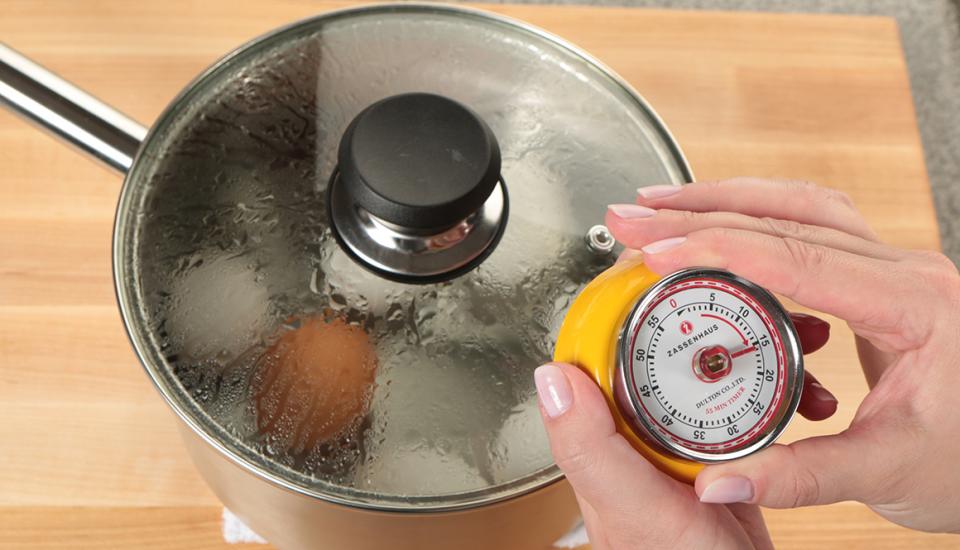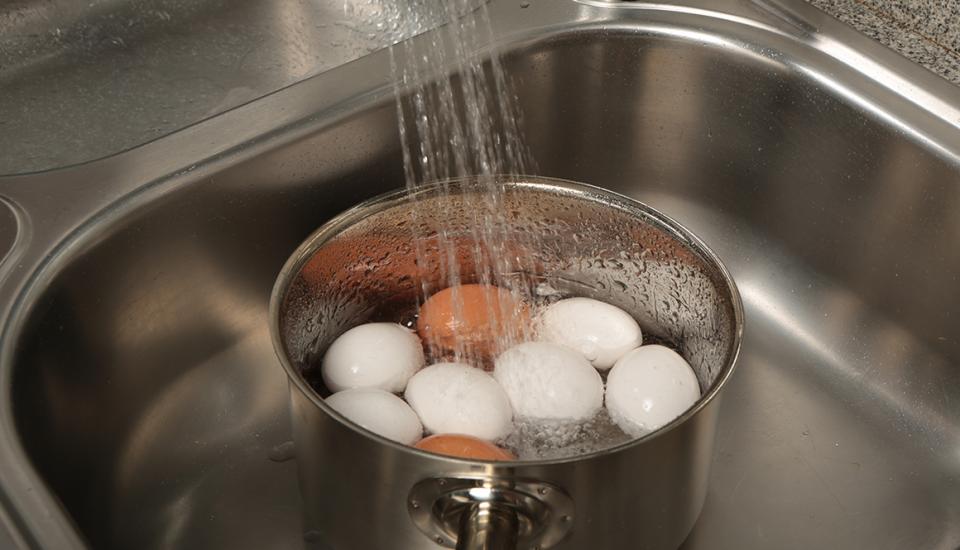How to make the Perfect Hard-Boiled Egg
Jump to the recipe in the video
Hard-boiled eggs also offer various important nutrients, including vitamin D, zinc, calcium, and all of the B vitamins. They're a particularly good source of riboflavin (vitamin B2) and vitamin B12. Many eggs' nutrients reside exclusively in the yolk, whereas the egg white primarily contains protein.
Eating eggs leads to elevated levels of high-density lipoprotein (HDL), also known as the “good” cholesterol. People who have higher HDL levels have a lower risk of heart disease, stroke, and other health issues. According to one study, eating two eggs a day for six weeks increased HDL levels by 10%.
Things You'll Need:
- A pot with a lid
- Eggs
- Water
- Instructions
Step 1
Step 2

Step 3

Remove from heat and let stand in water for 10-12 minutes for large eggs. Reduce the time slightly for smaller eggs, and increase the standing time for extra-large eggs.
Step 4

Drain water and immediately run cold water over the eggs until cooled. Rapid cooling helps prevent a green ring from forming around the yolks.
Tips:
- For the easiest peeling, use eggs that have been in the refrigerator the longest. The less fresh the egg, the easier it is to peel.
- To peel a hard-boiled egg, crackle the shell all over by tapping the egg on a hard surface, then roll the egg between your hands to loosen the shell. Begin peeling at the large end. Hold the egg under cold running water or dip it in a bowl of water to help remove the shell.
- Hard-boiled eggs with the shell on and kept in a sealed container will keep for 1 week in the fridge.
- To determine whether an egg is hard-boiled or raw, spin it! If it spins round and round evenly, it is hard-boiled. If it wobbles while spinning, it is a raw egg.
Subscribe to us on youtube @feastyfooddelights


Comments
Post a Comment